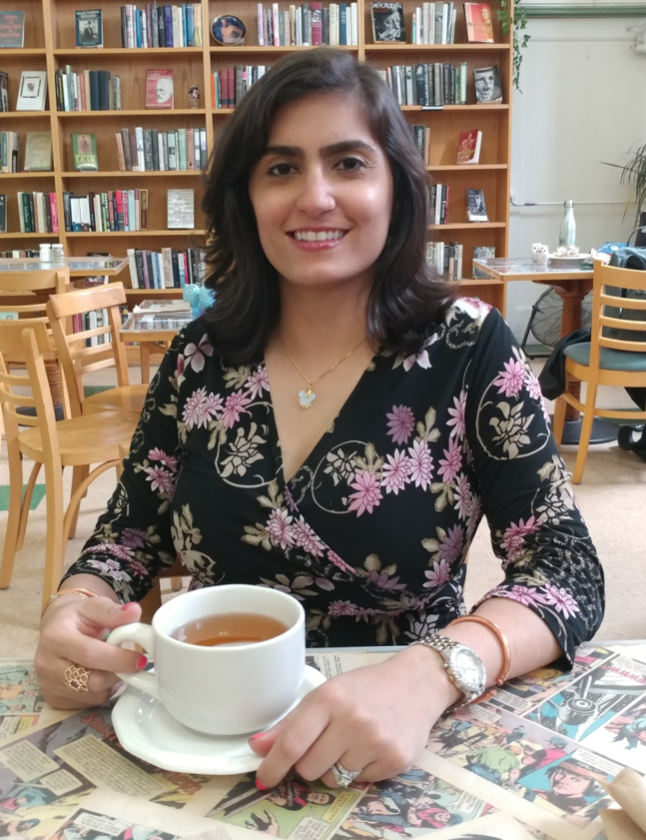Community Connection | IBD | Information

An image of the blog author, Tina sitting on a stonewall outside in front of a river and red bridge.
Supported by agutsyfeeling.org, a collaboration between Girls With Guts, Purdue University, College of Pharmacy, and the Academy for Continued Healthcare Learning. This post is also brought to you as part of Girls With Gut’s Community Connection in collaboration with Tina Aswani-Omprakash of Own Your Crohn’s.
In today’s day and age, there are many treatment options for inflammatory bowel disease (IBD – ulcerative colitis and Crohn’s disease). But given all the new medications on the horizon, how do we as patients participate in shared decision making with our IBD specialists regarding which medication might be best for us? And how do we know when we have given the medication a fair enough shot and that it might be time to move on to the next treatment option? How do we know when to consider surgery? It’s all a fine balance and takes a lot of navigation of the healthcare system, yes, but also requires understanding and empowerment on our part with regards to what our options are. Today’s blog post will discuss all of this and hopefully answer some of your questions on how to best manage your disease to ultimately own your diagnosis.
WHAT IS AN EFFECTIVE THERAPY?
First and foremost, it’s important for us to know what “effective” means in terms of a therapy for IBD. Having tasted remission, effective therapy certainly does mean that remission is the goal, which means that symptoms and inflammatory markers in blood and stool abate and colonoscopies and imaging come back clean. In terms of symptoms for me, that looked like alleviation of blood in my stool along with lessening of both abdominal cramping and burning pain in my gut. It also meant less lightheadedness, less dehydration and less fatigue along with fewer skin and joint extraintestinal manifestations. And while it’s important to recognize that an effective therapy can help alleviate symptoms, the goal is always to see that reflected in tests and procedures as well.
So the question really is, how do we achieve remission? In my own journey with IBD, I learned over the years that the best way to do so is by keeping an open mind and by having honest conversations with our specialists. I often researched the medications being presented to me via peer-reviewed journals on PubMed and not just everyday websites. I had to learn which sources were legitimate and provided the most credible information. One of the things I did was look at the data on medication efficacy and safety in studies in addition to asking my doctor to explain to me how the medication works, how long it takes to work and what his/her experience has been in prescribing this medication to other patients. I also asked my doctor to explain how long we would give the medication a fair shot before moving to the next option. Doing so allowed me to set realistic expectations for myself emotionally. And along those same lines, we always discuss what the next option is, whether that’s another medication or surgery, for me to also prepare myself mentally and always be two steps ahead.
SURGERY
That brings me to another important point: surgery. Surgery isn’t by any means a last resort but truly a treatment option for IBD. From a patient rights perspective, we are allowed to see what a colorectal surgeon has to say about our case. It’s important as disease is worsening, to get that surgical opinion to wrap our heads around what we really want for ourselves. Doing so can also give us clarity on how our quality of life could be better managed whether it is through medications and/or surgery. It is also important to consider surgery that is timed appropriately to prevent ourselves from getting too sick and becoming too malnourished while there is a window of opportunity to operate and to limit poor outcomes (malnutrition) and surgical complications.
SEEKING ANOTHER OPINION
Along the lines of patient rights and advocacy, it is also important to note that if we are not able to have the productive conversations we want with our gastroenterologist and/or surgeon, we may want to consider a second opinion. While I don’t like too many chefs in the kitchen, it is vital for us as patients to get our questions answered and to seek out-of-the-box solutions for our care. And making that appointment sometimes for a second opinion can feel very liberating in the sense that we are considering all our options while getting a fresh pair of eyes to look at our case.
Something to note here is that there is a huge difference in terms of understanding of IBD and relevant therapies in local community GI centers versus academic IBD centers at top universities. Local community centers may have some basic knowledge of IBD and they may be able to diagnose the condition but more specialized care is available at the academic centers. Specialized care means ongoing access to advanced therapies, clinical trials and the latest research and most novel surgical techniques are usually delivered by IBD-specialized physicians and surgeons at university centers. Getting second opinions and/or transferring care to such IBD specialists and surgeons is the way to go in my experience of living with IBD and getting it better controlled.
Where things can get challenging though is when I have in the past gotten two completely separate opinions and have had to go back to the physician I routinely see to say I want to go the other route. It’s not an easy decision and it can feel hard to speak up but we also have to remember this is our body and we have to make the decisions that feel right to us.
BECOMING PARTNERS IN OUR OWN CARE
With the growing number of therapeutic options out there for IBD, it can sometimes feel confusing to navigate IBD care at a young age. However, I’m here to tell you today that it is possible and getting organized is the first step. Organizing our medical records, doing research from credible sources and really thinking through and formulating our questions for our doctors are all much-needed for us to advocate for ourselves.
And ultimately, this is exactly what our new resource, A Gutsy Feeling, allows us to do: advocate for happier bowels. Designed for UC patients, A Gutsy Feeling offers information and ways to communicate with your providers that Crohn’s patients like myself have also learned from. By finding the courage to speak our truth and seek the best care for ourselves, we can own our IBD and become partners in our own care.

An image of the blog author sitting inside with a cup of tea with bookshelves and tables behind her.
Based out of New York City and raised on the Jersey Shore, Tina Aswani-Omprakash was diagnosed with Crohn’s Disease 15 years ago and has had numerous surgeries, including a failed j-pouch, multiple fistulae and later a permanent ileostomy. Tina is an award-winning South Asian American patient expert and health advocate whose focus is to normalize the rhetoric around chronic illnesses and disabilities in order to help diverse groups of patients own their ailments to live fuller, happier lives.
Tina maintains a blog and advocacy platform called Own Your Crohn’s (https://ownyourcrohns.com). Via her writing, lobbying, social media advocacy and speaking engagements, she spearheads public health causes, including those proposing research for and creating awareness for inflammatory bowel disease (Crohn’s and ulcerative colitis), life-saving ostomy surgery, gastroparesis, fistulizing disease and initiatives supporting health equity for women and racial, ethnic & sexual minorities.
Tina is pursuing her Master’s degree in Public Health at Mount Sinai’s Icahn School of Medicine. Tina’s blog was recently recognized as a 2020 Best Blog by Healthline and she was awarded the 2019 Healio Gastroenterology Disruptive Innovator Award in the Patient Voice category at the American College of Gastroenterology conference for moving the needle on GI care for patients.
Given Tina’s experience in setting the momentum for diverse populations living with IBD ostomy devices, Tina is joining Girls With Guts’s Community Connection as Liaison to lead the efforts in ensuring that more women of various races, ethnicities and sexual orientations can have a voice in the community. Tina’s story can be found on the GWG blog: https://girlswithguts.wpengine.com/blog/2019/4/30/brown-girl-with-guts-tinas-journey-with-crohns-disease.
